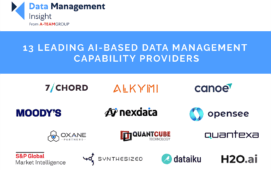Despite Swift’s confirmation last year that it would not be extending its remit in the business entity identification (BEI) space beyond the firms (both financial and non-financial) on its network in the short term, the idea is not off the cards completely for the future. Fabian Vandenreydt, head of broker-dealers, buy side and pre-settlement programmes, Markets at Swift, speaks to Reference Data Review about why he feels there should be a utility in the BEI space.
The lack of a standardised international business entity identifier (IBEI) has long been an issue for the industry and efforts to introduce standardisation in this space have been problematic thus far. The reasons behind the inertia in this area are largely political in nature and this has meant that there is unlikely to be any definitive movement towards an agreed IBEI any time soon.
There is, however, a recognised need for an identifier and there has been a fair amount of recent activity by industry bodies such as Working Group 8 (WG8) in re-defining the IBEI as the Issuer and Guarantor Identifier (IGI). The EDM Council has also been championing the subject with regulators and central banks to keep it on the industry agenda.
In the meantime, the entity data that is available to firms comes from lots of disparate channels and is largely supplied by the vendor community. Entity data is not static data and any changes that occur to the legal entities must be reflected in the way they are identified. Not an easy task by any stretch of the imagination.
The requirements in the current market to track counterparty data at a faster rate have exacerbated this problem. Firms are struggling to roll up the patchwork of information that they have in order to identify their risk exposure to their counterparties.
Swift has seen a significant increase in message traffic over recent months, as firms seek to garner more information on their counterparties, says Vandenreydt. The frequency with which users of Swift want their statement messages has increased, as people want a clearer and more up to date view of their positions.
Swift is currently looking at the area of counterparty risk management in terms of firms managing counterparty relationships using Swift. These firms are using the network to identify who they want to do business with and what business they want to do with them, says Vandenreydt. “We rolled out the functionality to do that some time ago but what we are seeing is that it is being used to a much finer level of granularity with a much more active management of relationships,” he says.
Hedge funds are diversifying their relationships with their prime brokers in order to spread their risk exposure for their post-trade activities across multiple firms, he continues. Central clearing counterparties (CCPs) for OTC trades have reduced the counterparty risk in the market and the users are also benefiting from the anonymity of the platforms. “It is a better way to control the risk than having hundreds of bilateral relationships. But it won’t be easy because it will be difficult to price instruments that are less standardised than traditional CCP trades. It may be a case of displacing the risk elsewhere,” he adds.
Vandenreydt is also hopeful that initiatives such as the ECB’s reference data utility plan will break the stalemate over an IBEI. “The list of bankruptcies and M&A that has been going on in the prime brokerage and banking industry has been a wake up call for everybody. This is true for all institutions including Swift. The way you identify your counterparties in order to be sure that the legal entity of that counterparty is the one you think it is very important these days,” he explains.
He firmly believes that entity data should not be the remit of the vendor community; rather a more independent body should maintain it. “I wonder whether business entity identification will be moved out of the hands of commercial software vendors because it is so important to the market,” he muses. “If there is a push from the regulators for more transparency, isn’t it better that this data is managed by a utility?”
Swift is an obvious candidate for this role but has thus far shied away from the responsibility. In July last year, it clarified that it would not be establishing an all-encompassing IBEI but would instead be extending the Bank Identifier Code (BIC) to cover non-financial institutions on its network. Swift is therefore currently working with business entities in a limited scope around participants in its financial telecommunications network, which is a long way short of identifying all the corporates in the world.
Vandenreydt does not rule out extending Swift’s remit in the future, however. “Swift has been working on legal entity identification for some time and it is an idea that always comes back into focus. The problem is that firms all have different identifiers in place and that makes it difficult to reconcile this data. There is definitely a need to standardise the relationship between an entity and its parent entity,” he explains.
“It would be one step further than what Swift currently does – identifies counterparties – to actually positioning the counterparty in a hierarchy of legal entities. It is much more challenging because it requires updating more frequently,” he adds.
But even if Swift decides to move into this space, it is bound to encounter some resistance from some corners of the industry. The BIC has been criticised for not being an appropriate format for business entity identification because of its granularity, which means that rather than referring to one entity, the BIC has multiple BICs relating to one entity.
The vendor community is also not ready to give up the ghost just yet. For example, Avox and Cusip Global Services (CGS), which is managed by Standard & Poor’s on behalf of the American Bankers Association, have recently joined forces to create a new universal identification system for global business entities.
The fact that so many parties are vying to keen to get involved in the business entity space is both a blessing and a curse. Although it bodes well for future investment and interest in the space, it also has the potential of adding another layer of complexity into an already confusing patchwork of identifiers.
Subscribe to our newsletter



